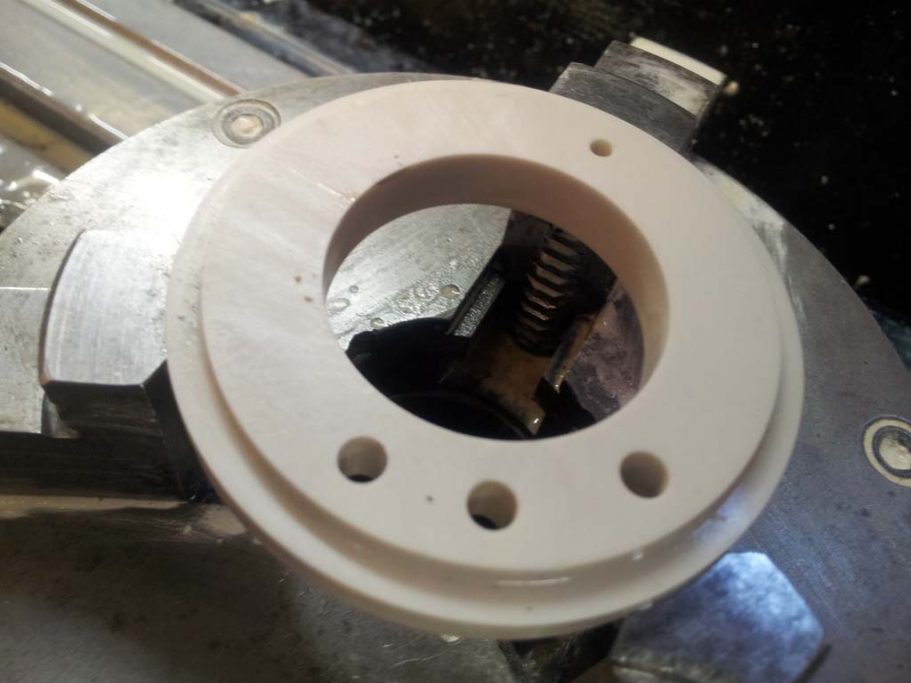19 September 2023

Achieve tight tolerances and fine surface finishes on ceramics with high-tolerance ceramic grinding. Know how Amon Engineering carries out the process.
Ceramic materials are generally known for their hardness, wear resistance, and thermal stability. Once high-tolerance ceramic grinding is carried out on these materials, industries that require ceramic parts and components can meet their strict requirements.
Precision manufacturing is one of the industries that can take advantage of high-tolerance ceramic grinding when processing ceramic components. Knowing the working principles of this process and its benefits can help you understand its significance to the said industry.
How High-Tolerance Ceramic Grinding Works
High-tolerance ceramic grinding, as mentioned earlier, involves the precise shaping and finishing of ceramic materials. They are done by removing portions of ceramics using grinding wheels or abrasive tools. The whole process then utilises advanced grinding techniques and machinery to achieve tight tolerances, fine surface finishes, and precise geometries.
Numerous steps are involved in carrying out high-tolerance ceramic grinding. These steps are:
• Material and Tool Selection: When choosing the appropriate ceramic material, industries should consider factors like hardness, wear resistance, thermal stability, and chemical resistance. Manufacturers must then select a specialised grinding wheel with diamond or cubic boron nitride abrasive particles to achieve the desired surface finish.
Grinding Preparation: The ceramic workpiece must then be prepared for grinding by ensuring it is clean, free from contaminants, and securely mounted on the machine. Proper work-holding devices should be used to maintain stability during grinding. The machine for the process should also be properly calibrated for precise material removal.
• Set Parameters: Afterwards, the grinding parameters like the speed, feed rate, depth of cut, and coolant/lubrication requirements must be set up as they are critical for achieving the desired material removal rate, surface finish, and dimensional accuracy.
• Grinding Operation: The grinding wheel must subsequently be in contact with the ceramic workpiece with the appropriate pressure and a consistent grinding force. It should move across the workpiece in a controlled manner to remove material and shape it according to the desired specifications. A coolant or grinding fluid must then be used during the grinding process to cool the workpiece and prevent overheating.
After grinding, the ceramic components must be inspected for dimensional accuracy, surface finish, and other quality parameters. Inspections can be done by using precision measuring tools and equipment to ensure they meet the required specifications. Now, depending on the application requirements, additional post-processing steps like polishing, deburring, or coating may be performed to improve the properties of the ceramic components.
Benefits of High-Tolerance Ceramic Grinding
Tons of benefits can be expected from high-tolerance ceramic grinding. For one, it can produce components with extremely tight dimensional tolerances, allowing them to be functional. This process can also help materials achieve excellent surface finishes, making them useful for applications that prioritise smoothness and low friction. High-tolerance ceramic grinding can likewise create ceramic materials that are durable against harsh operating conditions. Even their thermal stability can be improved by high-tolerance ceramic grinding.
High-tolerance ceramic grinding is a vital process in precision manufacturing that allows the production of complex components with exceptional precision, surface quality, and dimensional accuracy. It can easily meet the demands of modern precision manufacturing and push the boundaries of what can be achieved in terms of component performance and quality.
Optimized by www.NetwizardSEO.com.au
